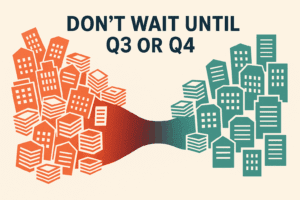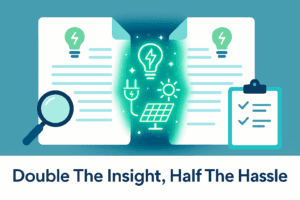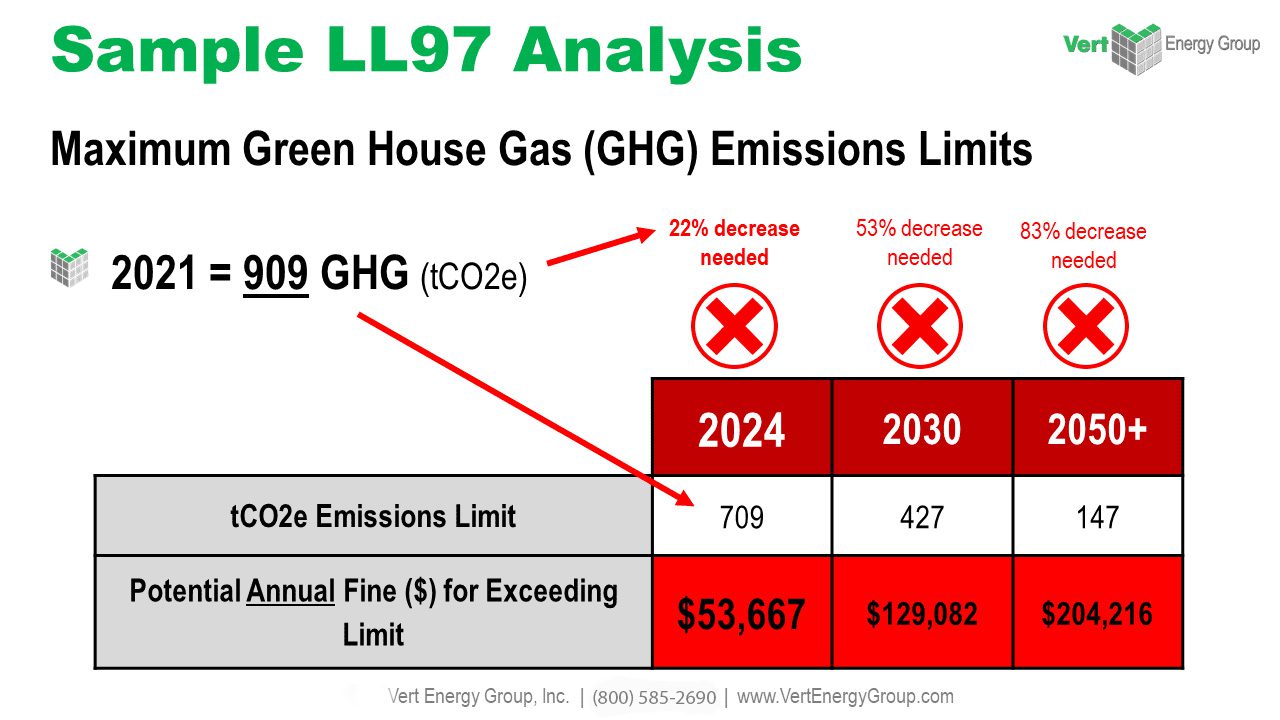Are you looking to get a better understanding of how energy benchmarking can be used? Want to know exactly how data from such benchmarking is utilized and what the benefits are? Then you’ve come to the right place! In this post we will explore many aspects of benchmarking and discuss variations in methods, as well as go through some practical instructions on using resulting data. We’ll also outline why it’s important for your business or property, so by the end you should have a comprehensive knowledge of energy benchmarking fundamentals. So let’s dive into learning about this beneficial practice – read on!
What Is Energy Benchmarking?
Energy Benchmarking is a process to compare energy performance among buildings. It gives building owners and operators the ability to gain insight into energy use patterns and make informed decisions to reduce energy costs. A benchmarking tool called Energy Star Portfolio Manager allows users to measure energy consumption in data entered over time – like actual energy bills or energy use intensity (EUI).
This data can then be used to identify where energy can be used more efficiently and pinpoint areas that may require an energy audit or other types of upgrades. By tracking energy performance over time, businesses can set goals to reduce energy usage and create a road map for future efficiency projects. With energy benchmarking, building owners have greater control over the long-term efficiency of their businesses.
Variations of Energy Benchmarking
Here are the variations of energy benchmarking:
1. Whole-Building Energy Benchmarking: This type of benchmarking is used to compare a building’s energy performance to that of other similar buildings. Building owners can assess the total energy usage of their building against those of similar facilities to identify potential areas for improvement.
2. Internal Energy Benchmarking: This type of benchmarking is used to compare different areas or systems within a building. It helps facility managers determine which areas of a building are using the most energy and what can be done to reduce that usage.
3. Portfolio Energy Benchmarking: This type of benchmarking is used to compare a portfolio of buildings. It can be used to identify which buildings are consuming the most energy, which can help facility managers target those buildings for energy efficiency upgrades.
4. Resource Benchmarking: This type of benchmarking is used to compare the efficiency of different energy resources. It can help facility managers identify which energy sources are being used most efficiently, allowing them to make informed decisions about their energy supply.
5. Comprehensive Energy Benchmarking: This type of benchmarking is used to compare all aspects of a building’s energy use, including energy-consuming systems and processes, resource usage, and other efficiency metrics. It can help facility managers identify all areas of potential improvement, allowing them to create a comprehensive energy efficiency plan.
No matter which type of benchmarking you choose, the key is to establish a baseline for energy performance and use it as the foundation for your energy efficiency efforts. By utilizing these types of benchmarking, you can identify and implement cost-effective solutions to reduce energy consumption and improve your bottom line.
Instructions on Benchmarking Data Use
Benchmarking data use and performance is an important step in understanding the effectiveness of data-driven analytics. Here are some steps to help you benchmark data use and performance:
Define Your Goals
Begin by defining the goals of your data-driven analytics project. This will help you identify the metrics that are most important for success.
Identify Key Metrics
Once you have established your goals, you can begin to identify the key metrics that will help you measure performance. Depending on the project, these may include items such as data storage, data processing, user engagement and data mining.
Measure Performance
Once you have identified the key metrics, collect performance data over a period of time to measure progress. It’s important to collect data from different sources and compare the results in order to identify areas for improvement.
Analyze Results
Once you have collected and analyzed performance data, it’s important to identify areas of improvement. This may include optimizing data storage and processing, improving user engagement or refining data mining techniques.
Make Adjustments
Once you have identified areas of improvement, start making adjustments to the data-driven analytics project. These could include anything from changing the tools and techniques used to implementing new processes or technologies.
Monitor Results
Finally, it’s important to monitor the results of your changes in order to ensure that performance continues to improve. By regularly collecting and analyzing performance data, you can ensure that your data-driven analytics project continues to be successful.
By following these steps, you can effectively benchmark data use and performance in order to ensure the success of your project. With regular monitoring and analysis, you can stay on top of your data-driven analytics project and ensure that it continues to be successful.
Why Is Energy Benchmarking Management Important?

Energy benchmarking management is an important part of portfolio managers’ responsibility. It allows portfolio managers to identify areas of improvement and make adjustments to their portfolio accounts, in order to lower the energy and water consumption data throughout their portfolio.
Through energy benchmarking management, portfolio managers not only reduce costs associated with energy efficiency improvements, but also help eliminate wasteful practices. With this advanced technology portfolio managers are able to gain insight into their portfolios by easily monitoring and tracking consumption data.
The information from this process helps portfolio manager account assess any potential risks or opportunities related to energy consumption data. As a result of improved knowledge & awareness about their portfolio’s energy efficiency, portfolio managers are better capable of making informed decisions that will benefit both themselves and the environment in multiple ways.
What Is The Meaning Of Benchmark Compliance?
Benchmark compliance is an energy efficiency compliance measure that is routinely used in energy audits. It involves energy star score data verification and energy building energy consumption data to assess if energy efficient products are being used to the best of their ability. The benchmark compliance measure then measures the energy efficiency performance of a building during normal operation, providing insight into any potential energy savings opportunities for building owners and operators. Benchmarking can be beneficial for reducing energy costs, increasing sustainability, and promoting energy efficiency within a building or facility.
Benefits Of Energy Benchmarking Data
Improved Efficiency & Performance
Energy benchmarking data can help to identify areas of inefficiency, potential for improvement and opportunities for efficiency gains. This data can be used to set goals and initiate projects that will improve the overall performance of a facility.
Cost Savings
By understanding the current energy usage of a facility, changes can be made to reduce costs and optimize energy utilization. This data can inform decisions on potential retrofits and upgrades, as well as identify opportunities to switch from high cost energy sources to lower cost alternatives.
Improved Reporting
Energy benchmarking data can provide a clear picture of how energy is being used in a facility, allowing for more accurate reporting to regulatory bodies or other stakeholders. This data can also be used for internal reporting purposes to track the progress of efficiency projects.
Improved Decision Making
Energy benchmarking provides decision makers with a comprehensive view of the current energy utilization in a facility. This information can be used to inform decisions on investments, upgrades or retrofits, and identify potential areas of improvement.
Increased Awareness
The use of energy benchmarking data can help to engage stakeholders in a discussion about energy efficiency. This data can be used to raise awareness about the importance of improving energy efficiency and drive action towards reducing overall energy usage.
It can also be used to generate interest in energy efficiency projects and initiatives, as well as motivate employees to adopt more energy efficient behaviors.
How To Calculate Energy Benchmark?
Calculating energy benchmark is an important step to understanding how energy efficient your building is. It’s a metric used by many governments and environmental protection agency to assess the environmental performance of commercial buildings, as well as residential homes. Energy benchmarking involves measuring the annual energy usage of a building, comparing it to similar buildings nearby and determining if there are any potential opportunities for improvement in terms of sustainability and environmental stewardship.
By considering the environmental performance of one’s home or business, individuals can be informed on their environmental impact and take action accordingly. Calculating an energy benchmark could provide one with the insight they need to utilize sustainable practices and help minimize environmental damage.
Conclusion
Energy benchmarking is a process that helps organizations track their energy use and compare it to similar buildings. By understanding how much energy your building uses, you can develop strategies to reduce consumption and lower costs. There are many different ways to benchmark energy data, but the most important thing is to use the information you collect to make meaningful changes in your organization. Have you tried energy benchmarking in your own organization? What tips do you have for other businesses who want to start tracking their energy consumption? Share your thoughts in the comments below!?















